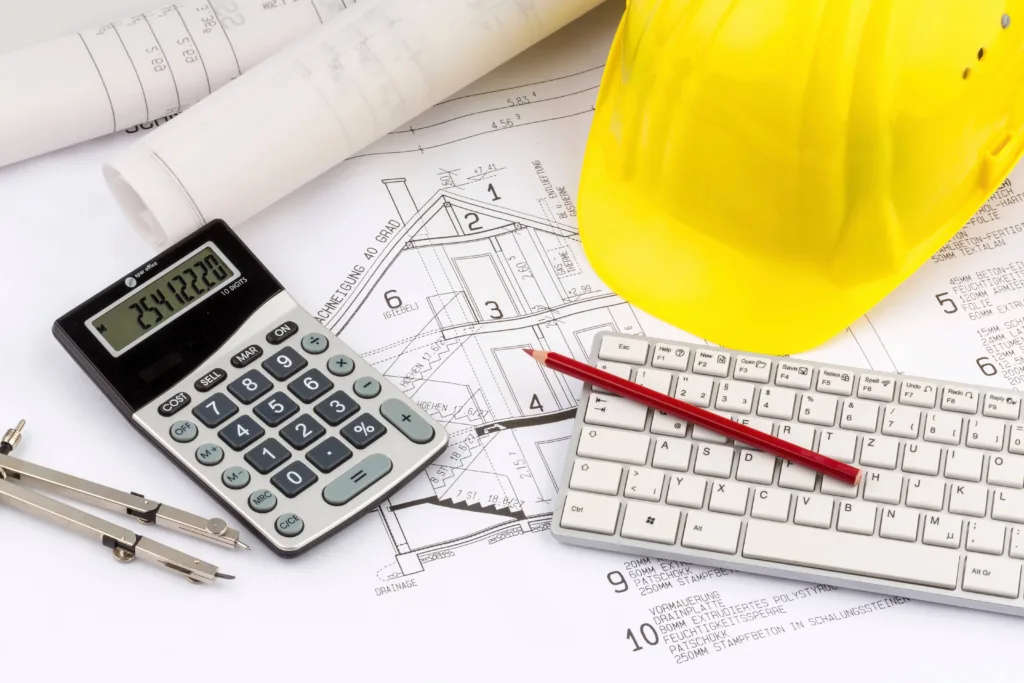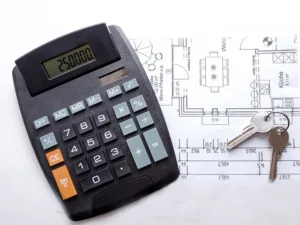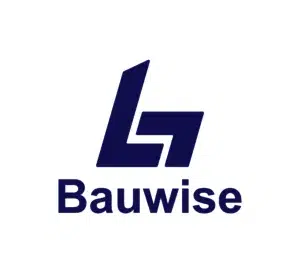A keen understanding of financials stands at the heart of success in the bustling construction world, where projects range from small-scale renovations to colossal infrastructure developments. Enter the realm of Construction Cost Reporting – an area often seen as the backbone of fiscal management in construction ventures.
So, what is construction cost reporting? In its simplest form, it provides:
- A snapshot of a project’s financial status.
- Offering insight into expenses incurred.
- Funds allocated.
- Projections of costs to come.
It’s not just about numbers, though. It’s about translating those numbers into actionable data, allowing stakeholders to make informed decisions about the project’s trajectory, whether reallocating resources or tweaking the timeline.
Accurate and efficient cost reporting has become more crucial as the construction industry evolves with new technologies and methodologies. In this deep dive, we’ll explore the intricacies of construction cost reporting, highlighting its undeniable importance in steering projects to financial success while maintaining a reputation of trustworthiness in a competitive market. Whether you’re a construction veteran or just dipping your toes into this vast industry, understanding cost reporting is pivotal to mastering the fiscal side of your projects.
Table of Contents
1. What Is a Construction Cost Report?

Have you ever faced the daunting task of keeping track of every expense on a family vacation or during home renovations? If so, you’ve already gotten a small taste of what a Construction Cost Report is on a much grander scale.
A Construction Cost Report is essentially the ledger of a construction project. It captures, in meticulous detail, a construction endeavor’s financial ins and outs. Think of it as the comprehensive financial diary of a building project, from its first brick to the final coat of paint. It provides a clear view of where every penny has been spent and forecasts where the remaining budget will be directed.
But beyond just numbers and columns, a Construction Cost Report tells a story. It narrates the journey of a project from a fiscal perspective. Is the project sticking to its budgetary guidelines? Are there unexpected expenses that need addressing? Where can savings be made, and where should additional funds be allocated? All these questions find their answers in this pivotal document.
In the broader scope of the construction industry, these reports are indispensable. They serve not just as financial records but also as trust-building tools. Stakeholders, investors, and potential clients often gauge a firm’s reliability and efficiency based on their transparency and accuracy in cost reporting. In other words, a well-maintained and accurate Construction Cost Report isn’t just a financial necessity; it’s a testament to a firm’s integrity and professionalism.
2. Why Is Cost Reporting in Construction Important?

Picture this: you’re baking a multi-layered cake for a special occasion. You’ve got your ingredients, recipe, and vision of the perfect dessert. Now, imagine halfway through; you realize you’re short on sugar, or worse, you’ve accidentally doubled the salt! This hiccup could have been avoided if you’d closely checked your ingredients.
Similarly, in the vast and multifaceted world of construction, cost reporting plays the critical role of that checklist, ensuring projects don’t run into unexpected ‘flavor mishaps’ along the way. Here’s why this practice is an absolute cornerstone in construction:
- Financial Oversight and Control: Much like the reins to a galloping horse, cost reporting helps project managers maintain a firm grip on the project’s finances. By monitoring the inflow and outflow of funds, they can ensure that the project remains within its budgetary limits.
- Forecasting and Budgeting: With historical data and current financial status, stakeholders can predict future expenditures, allocate resources more effectively, and spot potential economic challenges before they snowball into major issues.
- Identifying Inefficiencies or Cost Overruns: Cost reporting acts as the magnifying glass, highlighting areas where funds might be seeping out unnecessarily. By identifying these inefficiencies early on, corrective measures can be taken promptly.
- Building Trust with Stakeholders: Transparency is the currency of trust in the construction realm. When investors, clients, and other stakeholders see a project’s financial health, it fosters confidence and cement relationships for future collaborations.
By now, it should be crystal clear: cost reporting isn’t just a tedious task relegated to accountants. It’s the beating heart of a construction project’s financial management system, ensuring that the finished structure isn’t just physically sound but fiscally solid as well.
3. What Does a Typical Cost Report Include?

If you’ve ever unpacked a puzzle box, you know that the magic isn’t just in the final picture but in every piece that contributes to that image. Each piece has its unique place, and they paint the whole story together. Similarly, a Construction Cost Report isn’t just a monolithic document. It’s a tapestry woven from numerous intricate threads, each providing valuable insights into the project’s financial landscape.
Project Details:
Imagine you’re settling down to watch a movie. Before you get engrossed in the plot twists and dramatic scenes, you first want to know the title, perhaps the director, and the main actors involved. These initial tidbits set the context, helping you better understand and appreciate the story. Similarly, in the grand cinema of construction, the “Project Details” section of a Construction Cost Report serves as the opening credits, presenting the project’s foundational aspects that frame the subsequent financial saga.
Here’s what this crucial section typically encompasses:
- Name of the Project: Just as movies have distinct titles, every construction project is christened with a name, “Downtown Condo Complex” or “Riverside Office Tower.” This helps in clear identification, especially when juggling multiple projects.
- Location: Where’s the stage set? In New York? Or perhaps a quaint town in Texas? The geographical location provides context and often influences costs due to varying labor rates, material availability, and regional regulations.
- Description of the Project: This is where the plot thickens! A brief overview gives stakeholders a clear picture of the project’s scope. Are we talking about a ten-story residential building, a sprawling shopping mall, or perhaps a state-of-the-art sports stadium? This snapshot offers insights into the complexity and scale of the endeavor.
- Start and Expected Completion Dates: These timestamps guide the narrative. Just as you’d like to know the duration of a movie, stakeholders want to be aware of the project’s timeline. It helps assess progress, foresee potential delays, and set realistic expectations.
In the vast theater of construction, these project details may seem elementary, but their significance is paramount. They provide clarity, set the stage, and ensure every stakeholder is, quite literally, on the same page as the story unfolds.
Financial Overview:
Suppose the “Project Details” section was akin to the appetizer, setting the palate and expectations for the main course. In that case, the “Financial Overview” is undoubtedly the hearty entrée of our Construction Cost Report feast. It’s where the rubber meets the road, delving deep into a project’s fiscal health and projections.
Think of planning a big family dinner. You’ve got your menu, but before you start cooking, you need to know your budget, how much you’ve already spent on appetizers, and what remains for the mains and dessert. Similarly, the financial overview provides the monetary blueprint for the construction’s journey, ensuring every step is taken with fiscal clarity.
Here’s what’s on the plate:
- Total Project Budget: This is your entire dinner budget, determining the scale and abundance of your construction feast. It’s the ceiling of your spending, derived from initial estimations and agreed upon by stakeholders.
- Amount Spent to Date: Consider this the cost of appetizers and starters you’ve already dished out. It reflects the expenses incurred from the project’s onset to the present, offering a real-time glimpse into the funds utilized.
- Estimated Cost to Complete: The budget needed for the mains, desserts, and maybe some wine. In construction terms, it’s the projected expenditure required to complete the project based on current trends and foreseeable expenses.
This financial overview isn’t just about numbers. It’s about gauging where the project stands today and charting its course. It’s the monetary compass ensuring the ship sails smoothly, avoiding potential icebergs of overspending and fiscal mismanagement.
By anchoring the project with a clear financial overview, stakeholders, investors, and project managers can dine confidently, savoring each phase of the construction process without the aftertaste of unexpected financial surprises.
Breakdown of Costs:
Have you ever stood at the heart of a bustling kitchen during a grand feast? It’s a symphony of organized chaos with various ingredients coming together to craft a delightful dish. Each component, be it spices, vegetables, or proteins, is pivotal in the outcome. Similarly, when you delve into the heart of a construction project’s finances, you’ll find myriad costs, each contributing uniquely to the overall expenditure.
The “Breakdown of Costs” section in a Construction Cost Report is akin to the ingredient list of that grand meal, detailing every expense and its role in the project. Let’s sift through these costs and understand their essence:
- Direct Costs: These are the primary flavors, the core ingredients that directly contribute to the construction:
- Labor: The hands that mold, construct, and bring the project to life. This includes wages, overtime, benefits, and other related expenses.
- Materials: The bricks, cement, steel, and more forming the physical backbone of the project.
- Equipment: Every tool and machinery, from towering cranes to humble hammers, aids in the construction process.
- Subcontractors: Specialized entities roped in for specific tasks that need expert handling, such as electrical fittings or plumbing.
- Indirect Costs: These are akin to the background processes in the kitchen, essential yet often overlooked:
- Overheads: Costs of running the project, like site maintenance, utilities, and temporary facilities.
- Insurance and Bonds: Safeguarding the project against unforeseen mishaps, ensuring financial and operational security.
- Permits and Licenses: Necessary legal clearances, ensuring the project aligns with regional rules and regulations.
- Administration: The expenses to manage the workforce, paperwork, and overall project logistics.
Like a master chef, understanding and managing these individual costs ensures that the final product — a culinary masterpiece or a towering skyscraper — is a testament to meticulous planning and expert execution. So, the next time you look at a majestic building, remember the myriad of costs behind its grandeur, each as vital as the next.
Progress Comparison:
If you’ve ever taken a moment mid-journey to glance at a map, you’re familiar with the joy of tracing your progress and the anticipation of the path ahead. Much like that traveler, every stakeholder involved in a construction project frequently pauses to assess where they stand in relation to their destination. Enter the “Progress Comparison” section of the Construction Cost Report—a veritable map detailing the journey thus far and what remains to be charted.
Breaking it down:
- Budgeted vs. Actual Expenditure:
- Budgeted Expenditure: Think of this as the planned route, chalked out well in advance, marking every twist, turn, and pitstop.
- Actual Expenditure: This is the path you’ve treaded. Maybe you stopped at a few unplanned scenic spots or found a shortcut. Comparing the two reveals if you’re on track, ahead, or lagging in financial terms.
- Work Completed vs. Work Remaining:
- Work Completed: The milestones you’ve reached, the challenges you’ve overcome, and the landmarks you’ve built.
- Work Remaining: The stretches yet to be traveled, challenges to anticipate, and the finishing touches that will complete your project. Gauging these metrics provides a tangible sense of progress, highlighting areas of efficiency and zones requiring attention.
The beauty of this section lies in its duality. It provides a snapshot of the present, capturing the project’s pulse at that exact moment, and also throws light on the road ahead. Such insights empower stakeholders to recalibrate strategies, optimize resources, and ensure that the journey to project completion is efficient and effective.
In essence, the “Progress Comparison” is the compass and map combined, guiding teams through the maze of construction challenges, ensuring they reach their destination— a successfully completed project on time and within budget.
4. Types of Construction Costs to Report About

Let’s venture into the intriguing world of construction costs, which is much like delving into a painter’s palette. Just as an artist picks from a range of hues—each with its unique shade and significance—the construction realm boasts a variety of costs, each serving a distinctive purpose in the grand canvas of a project.
Here’s a walkthrough of the diverse spectrum of construction costs that paint the complete picture:
Direct Costs:
Dive into any construction project, and it’s like opening a grand musical box. The most prominent notes you immediately recognize and resonate with represent the Direct Costs. They set the primary rhythm and pace of the symphony. Just as the unmistakable melody of a song anchors the tune, Direct Costs are the expenditures that firmly ground a construction project, tying directly to specific tasks and phases.
Let’s break down this melody:
- Materials: The strings of our construction orchestra.
- Description: Every brick, beam, nail, and tile—the tangible ingredients that come together to build structures from the ground up.
- Considerations: Quality of materials can significantly influence cost. Choosing between granite or marble, hardwood or laminate, can sway the budget significantly. It’s vital to strike a balance between quality and affordability.
- Labor: The harmonious notes crafted by skilled musicians.
- Description: This pertains to the workforce directly involved in construction, from masons and carpenters to electricians and plumbers.
- Considerations: Labor costs vary based on skill levels, regional wage standards, and project complexity. Efficient labor management ensures the project progresses smoothly without costly delays.
- Machinery & Equipment: The powerful percussion section.
- Description: All essential tools, from handheld drills to colossal cranes, facilitate and expedite construction tasks.
- Considerations: Renting vs. purchasing equipment, maintenance costs, and operational efficiency play a role in determining these costs.
- Subcontractors: The guest soloists enhance the core symphony.
- Description: Specialists are brought in for niche tasks, ensuring those aspects of the project are handled with expertise. This might include entities operating electrical installations, landscaping, or specialized masonry work.
- Considerations: The selection of subcontractors impacts not only the budget but also the quality and timeline of the project. Due diligence in choosing reliable, skilled subcontractors is paramount.
In the grand concert that is a construction project, Direct Costs are the lead performers, setting the tone and direction. A keen understanding of these costs is akin to a conductor’s mastery over the central melody, ensuring the project progresses harmoniously, meeting quality standards and budgetary constraints.
Indirect Costs:
Imagine you’re piecing together a vast jigsaw puzzle. While the central pieces, showcasing the main image, grab your attention, the border and background pieces frame and complete the picture. In the realm of construction, Indirect Costs play a similar role. While they might not be the showstoppers like Direct Costs, they form the essential backdrop, supporting and complementing the primary expenditures.
Let’s navigate through these supporting puzzle pieces:
- Administrative Costs: The sky in our jigsaw landscape.
- Description: These encompass the expenses that keep the project running smoothly from behind the scenes—like office rent, stationary, administrative staff wages, and software licenses.
- Considerations: Streamlining administrative tasks and leveraging technology can lead to cost savings in this category.
- Overhead Expenses: The subtle hues that blend the puzzle pieces together.
- Description: These are the recurring business costs, such as utilities, site facilities, security, and storage.
- Considerations: Effective resource management, such as optimizing energy consumption and storage solutions, can keep overheads in check.
- Insurance & Licensing: The puzzle’s edges, providing security and structure.
- Description: Safeguarding the project and its stakeholders, these costs cover the necessary permits, insurance policies, and licenses.
- Considerations: Regularly reviewing insurance needs and staying updated with local regulations can prevent unforeseen expenses and legal complications.
- Equipment Depreciation: The wear and tear of our jigsaw pieces.
- Description: Over time, machinery and tools lose value due to consistent usage. This cost accounts for that depreciation.
- Considerations: Regular maintenance and timely upgrades can maximize equipment lifespan, optimizing its cost over time.
- Training & Development: The manual to our puzzle, guiding and enhancing the process.
- Description: Costs associated with upskilling the workforce or introducing them to new technologies and methodologies.
- Considerations: An educated and well-trained team can boost productivity and reduce errors, offering long-term cost benefits.
While Indirect Costs might not be the spotlight-stealers in a construction project’s budgetary discourse, their significance is undeniable. Much like the often-overlooked pieces of a jigsaw puzzle, they ensure the bigger picture is complete, cohesive, and captivating.
5. Common Construction Cost Reporting Mistakes to Avoid

Stepping into the bustling construction world is like embarking on a culinary adventure. As any seasoned chef will tell you, the path to gourmet greatness isn’t without its fair share of kitchen blunders. Similarly, in the quest for construction precision, errors in cost reporting can be the proverbial ‘too much salt’ in your dish. By avoiding these common mistakes, you can ensure your construction project doesn’t leave a bitter aftertaste.
Here’s your recipe for error-free cost reporting:
- Underestimating Costs: The culinary equivalent of running out of ingredients mid-recipe.
- Description: Often, in the initial enthusiasm, there’s a tendency to be overly optimistic, leading to costs being underestimated.
- Solution: Always factor in a contingency amount. Regularly review and update budgets as the project progresses and market conditions shift.
- Not Accounting for Indirect Costs: Skipping the essential garnish on your dish.
- Description: Overlooking the subtler yet crucial indirect costs can lead to budgetary discrepancies.
- Solution: Create a comprehensive checklist, ensuring every aspect, from administrative to equipment depreciation, is accounted for.
- Relying Solely on Historical Data: Sticking rigidly to a traditional family recipe.
- Description: While past projects provide valuable insights, relying solely on them disregards current market dynamics.
- Solution: Use historical data as a foundation, but validate with current market research and expert opinions.
- Neglecting to Update Reports: Leaving your stew unattended on the stove.
- Description: With the dynamic nature of construction, costs can change rapidly. Outdated reports can lead to misinformed decisions.
- Solution: Establish regular intervals for report updates, ensuring all stakeholders are in sync with real-time expenses.
- Overlooking Soft Costs: Missing out on the seasonings that elevate a dish.
- Description: Soft costs, like design fees, legal consultations, and financing charges, may not be tangible but are essential budget components.
- Solution: Maintain a separate ledger or section for these costs, ensuring they don’t get lost in the shuffle.
A successful construction manager must be detail-oriented, adaptive, and proactive, like any masterful chef. By avoiding these common pitfalls in cost reporting, you set the stage for a construction endeavor that’s as delightful and rewarding as a perfectly-cooked meal.
6. How to Improve Cost Reporting

Imagine taking a scenic drive through the countryside. A reliable GPS ensures you’re on the right path as you navigate the twists and turns, giving real-time updates and redirecting as needed. In the construction landscape, cost reporting is that indispensable GPS, charting the financial course of your project. And like any reliable navigator, its accuracy and efficiency can continually be fine-tuned.
Let’s set the coordinates for enhanced cost reporting:
- Embrace Technology: Upgrading from an old map to a state-of-the-art GPS.
- Description: Today’s digital tools and software offer unparalleled detail, automation, and accuracy in financial tracking.
- Benefit: Real-time data input, automatic calculations, and integrated analytics can flag discrepancies, forecast trends, and facilitate quick decision-making.
- Regular Training: Like updating your driving skills for a new terrain.
- Description: Ensuring your team is well-versed with the latest tools and industry best practices can keep reporting standards high.
- Benefit: A well-informed team reduces errors, streamlines the reporting process, and ensures uniformity in data management.
- Incorporate Feedback: Ask locals for the best shortcuts.
- Description: Regular feedback sessions with stakeholders can offer invaluable insights and highlight areas of improvement.
- Benefit: It creates a feedback loop, refining the reporting process over time and fostering stakeholder trust.
- Enhanced Data Visualization: Transitioning from reading directions to a visual map.
- Description: Utilizing graphs, pie charts, and infographics can make complex financial data more digestible and actionable.
- Benefit: Visual representation facilitates easier comprehension, aiding in quicker, informed decisions and stakeholder communication.
- Scheduled Audits: Regularly check if the GPS is calibrated correctly.
- Description: Periodic internal and external audits can pinpoint inaccuracies and offer solutions for process optimization.
- Benefit: It reinforces financial transparency, boosts stakeholder confidence, and ensures the project remains on its designated economic course.
Much like an evolving journey, the road to construction excellence is ongoing, and refining your cost reporting is a strategic pit stop. By embracing these strategies, you ensure your construction project remains on the path of financial clarity, efficiency, and success.
7. How to Create a Construction Cost Report Step by Step

Crafting a construction cost report is a lot like baking a layered cake. Each layer needs individual attention, from the fluffy sponge to the creamy filling. And, when assembled in the correct order, you get a delightful masterpiece. Let’s don our chef hats and create a comprehensive cost report, one step at a time.
Step 1: Gather all necessary financial data
Ah, the thrill of starting a new recipe! Just as any seasoned chef knows the importance of having all ingredients on hand before the cooking begins, the construction manager also recognizes the crucial first step in creating a cost report: gathering all necessary financial data.
Imagine trying to bake a cake and, halfway through, realizing you’re missing eggs. Similarly, embarking on a cost report without all the financial figures can lead to a half-baked result.
Here’s how to ensure you have everything you need:
- Documentation Dive: Dive deep into the treasure trove of receipts, invoices, contracts, and other transaction records associated with your construction project. Think of these as your foundational ingredients—without them; your report lacks substance and accuracy.
- Digital Assistance: In this age of technology, software tools designed specifically for construction cost management can be game-changers. They help keep records organized and ensure that no financial detail, no matter how minuscule, is overlooked.
- Team Collaboration: Often, vital financial data resides with various team members—the site manager overseeing equipment rentals or the procurement officer handling vendor payments. Organize regular catch-ups or create a centralized system where everyone logs in their expenses. It’s like ensuring every chef in a large kitchen logs in their ingredient usage.
- External Inputs: Don’t forget external stakeholders! Subcontractors, suppliers, or consultants might have essential financial information that needs to be included in the report. Regular communication and clear guidelines on data submission can streamline this process.
Remember, a well-baked cake (or, in our case, a thorough cost report) is only as good as the ingredients that go into it. By diligently gathering all necessary financial data, you’re setting the stage for a cost report that is both comprehensive and deliciously insightful.
Step 2: Categorize Expenditures into Direct and Indirect Costs
Now that we have all our ingredients on the kitchen counter, it’s time to sort them out. Much like differentiating between dry and wet ingredients when baking, it’s pivotal to distinguish between direct and indirect costs in construction cost reporting. This step ensures that our ‘recipe’ (or report) has the right balance and flavor profile.
Here’s a closer look at the process:
- Understanding Direct Costs: Think of direct costs as the flour in our baking analogy. They are primarily directly attributable to the construction activity. These can include:
- Wages for on-site workers
- Materials like cement, steel, and wood
- Equipment rentals or purchases specific to the project
- Pro-tip: Always cross-check labor hours with project schedules to ensure accuracy in wage calculations.
- Deciphering Indirect Costs: Conversely, indirect costs can be likened to vanilla essence or baking powder. They’re vital to the process but aren’t the main ingredient. Examples include:
- Site security and safety measures
- Utilities like water and electricity for the site
- Supervision, administration, and general office expenses
- Pro-tip: Since indirect costs often recur and can be distributed across multiple projects, maintain a separate log to track and allocate them appropriately.
- Using Digital Tools: Software solutions designed for construction cost management can make categorization seamless. They help ensure that each expenditure finds its right bucket, direct or indirect. Consider these tools your electronic measuring cups, ensuring precision in every step.
- Frequent Review: Periodically review the categorized costs, especially in long-term projects. Prices can evolve, and what started as an indirect expense might become more direct as the project progresses.
By adequately categorizing your expenditures, you’re ensuring clarity in your report. It clearly shows where funds are channeled, allowing for informed decision-making and accurate forecasting. It’s like ensuring your cake has the perfect texture, neither too dense nor too airy, but just right.
Step 3: Compare Actual Costs with Budgeted Amounts
So, imagine you’re following a classic chocolate chip cookie recipe. You’ve got your ingredients and measurements laid out, and as you mix them in, you occasionally taste the dough to ensure it’s on track. This ‘taste test’ in construction cost reporting compares your actual costs with the budgeted amounts. Just like you wouldn’t want overly sweet cookies, you wouldn’t want your project costs spiraling out of control.
Let’s delve deeper into this comparison process:
- Laying the Groundwork: First, ensure that actual and budgeted data are readily accessible. Whether using spreadsheets, accounting software, or specialized construction management tools, these numbers must be accurate and up-to-date.
- Side-by-Side Analysis: With data in hand, juxtapose the actual costs against the budgeted figures. This will highlight areas where the project exceeds the anticipated spending.
- Pro-tip: Visual aids, such as bar graphs or pie charts, can make this comparison more digestible. It’s the difference between reading a recipe and watching a baking tutorial.
- Identifying Variance: Any difference between the actual and budgeted amount is known as variance. Positive variance indicates you’re under budget (a sweet surprise!), while negative variance signifies overspending (a touch too much salt, perhaps?).
- Dive into the Details: Once variances are spotted, investigate their root cause. Did material costs surge unexpectedly? Were there unplanned labor overtime charges? Pinpointing the reasons will guide corrective actions.
- Iterative Process: Much like taste-testing at various stages of baking, periodic cost comparisons throughout the project lifecycle ensure you remain on the right financial track.
Comparing actual costs to budgeted amounts isn’t just about number crunching; it’s about aligning the project’s financial trajectory with initial expectations. It provides stakeholders with a transparent view of financial performance, allowing for course corrections if needed. Our culinary journey is about ensuring that the end product tastes just as delicious as we envisioned.
Step 4: Highlight Areas of Concern or Overruns
Picture this: You’re perfecting a multi-layered cake and notice one layer isn’t sitting quite right. Ignoring it might lead to the entire cake collapsing. In construction cost reporting, areas of concern or overruns are like that unstable layer. Addressing them proactively can be the difference between a project’s success and potential pitfalls.
Here’s your guide to effectively spotlighting and addressing these concerns:
- Clear Visualization: Just as a baker may use a level to check the evenness of a cake layer, utilize visual tools to emphasize overruns. Heat maps, color-coded charts, or graphs can quickly draw attention to problem areas, making them stand out in the report.
- Quantify the Impact: Determine the extent of the overrun. Is it a minor deviation, or has it blown a significant hole in the budget? Putting a percentage or dollar figure to the overrun gives it tangible weight, like measuring the tilt in a leaning cake layer.
- Pro-tip: When quantifying, project potential future impacts if the issue still needs to be addressed. This can amplify the urgency to act.
- Root Cause Analysis: Identify the core reasons behind the overrun. Was it due to fluctuating market prices, unforeseen site challenges, or perhaps mismanagement? Unraveling the ‘why’ is akin to understanding why a cake layer isn’t setting – maybe the oven temperature was off, or an ingredient was past its prime.
- Recommend Corrective Actions: Highlighting a problem without suggesting a solution is like pointing out a baking flaw without knowing how to fix it. Based on the root cause, suggest actionable steps. This might involve renegotiating supplier contracts, adjusting project timelines, or revisiting certain design elements.
- Communicate with Stakeholders: Open a channel of communication with all relevant parties. Be transparent about the overruns, implications, and proposed corrective measures. Collaborative brainstorming can often lead to innovative solutions.
By proactively highlighting areas of concern in your construction cost report, you demonstrate thoroughness and a commitment to project integrity. It’s about catching that wobbly cake layer before it’s too late, ensuring the final product is stable and delectable.
Step 5: Summarize Work Progress in Relation to the Costs
Imagine baking a complex pastry, say, a croissant. You’ve layered the dough, folded it in the butter, and given it the necessary rest. Now, before moving on to the following steps, you pause to assess: Is the dough’s texture in line with the effort and ingredients put in? In construction cost reporting, this reflective pause correlates the project’s progression with its associated costs.
Here’s how you can effectively capture this relationship in your report:
- Progress Snapshot: Start by providing a concise update on the project’s current status. Whether it’s a percentage of completion or a milestone reached, this gives readers an immediate grasp of the progress. Think of it as describing the layers and flakiness of your half-done croissant.
- Cost Correlation: Now, juxtapose this progress against the expenditures. For example, if 50% of the project is complete, but 70% of the budget has been utilized, an apparent disparity needs addressing.
- Pro-tip: Use ratio comparisons, like ‘cost-to-complete’ or ‘cost-per-unit-of-work,’ to provide deeper insights.
- Visual Aids: Employ line graphs or Gantt charts to depict the alignment (or misalignment) between progress and costs. These visuals can help stakeholders quickly identify if the project is on a financially sustainable trajectory. It’s akin to comparing the texture of your croissant at various stages against reference images.
- Highlight Achievements and Concerns: Did the team complete a project phase under budget? Celebrate it! Conversely, if a particular section is lagging with escalating costs, flag it. Being forthright about both triumphs and challenges builds credibility.
- Offer Context: Sometimes, costs might run high in the initial phases due to heavy equipment or material outlay, only to balance out as the project advances. By offering context, you prevent stakeholders from jumping to hasty conclusions.
Summarizing work progress in relation to costs ensures that all invested parties have a clear picture of whether the project’s financial health aligns with its on-ground reality. It’s the assurance that the time, effort, and resources invested yield a pastry that’s rich in layers and on track to taste divine.
Step 6: Include Forecasts and Projections
Imagine you’re planning a grand dinner and just tasting your soup – it’s a tad bland. Based on this tasting, you predict that adding a pinch of salt now will ensure rave reviews later. Similarly, using current data to forecast future outcomes in construction cost reporting helps steer the project in the right direction.
Delve into the art and science of forecasting with these steps:
- Review Historical Data: Before forecasting the future, it’s essential to understand the past. Look at previous projects or earlier phases of the current one. Were there consistent trends or patterns in spending? It’s much like recalling past dinners to gauge how much seasoning tends to be just right.
- Pro-tip: Leverage construction-specific software to analyze historical data, drawing patterns that might not be immediately evident.
- Calculate Projections: Use current data and trends to predict future costs. Will you stay under budget? Are overruns imminent? These projections can be like the taste tests chefs rely on – guiding adjustments before serving the main course.
- Factor in External Variables: Consider elements that might influence costs in the coming phases. Market fluctuations, seasonal labor rate changes, or potential material shortages can all play a role. It’s akin to anticipating guests wanting extra gravy or foreseeing that a specific ingredient might be scarce.
- Use Visual Aids: Projection graphs, pie charts, or comparative tables can provide clarity. A visual forecast, showing projected versus actual costs, can be invaluable for stakeholders, much like a dinner menu with pictures whetting the appetite.
- Include Contingency Plans: Alongside your forecasts, propose solutions for potential challenges. If costs are projected to rise, suggest strategies to mitigate them. It’s like having a backup sauce if the primary one doesn’t pan out.
- Continuous Update: As the project advances, keep revising your forecasts. Regularly update projections based on the latest data, ensuring they remain relevant and actionable. Think of it as adjusting your dinner menu based on the fresh produce available on the day.
Incorporating accurate forecasts and projections into your construction cost report is akin to a chef predicting and preparing for dinner needs. It’s about blending experience with insights, ensuring that the project, much like the dinner, unfolds without financial hitches and leaves everyone content.
Step 7: Review and Double-Check for Accuracy
Picture this: You’ve whipped a grand cake for a special occasion. The frosting looks impeccable, the layers are even, and the aroma is divine. But, just before serving, you take a moment to ensure there aren’t any stray ingredients or that you haven’t missed any crucial toppings. Similarly, your construction cost report, however detailed, requires a thorough review to ensure its accuracy and completeness.
Dive into this meticulous final step with these guidelines:
- Data Validation: Begin by cross-referencing your numbers. Are the totals adding up correctly? Are there any glaring anomalies? Like ensuring your cake is baked through, checking your data’s consistency is paramount.
- Pro-tip: Consider utilizing construction accounting software that offers automated data validation features, reducing the chance of human errors.
- Consistency in Formatting: Ensure that your report maintains a uniform presentation. From fonts and headings to tables and graphs, consistent formatting boosts readability. Think of it as aligning the layers of your cake for that perfect cross-section view.
- Peer Review: As you might ask a fellow baker to taste-test your creation, have a colleague review your report. Fresh eyes can often spot inconsistencies or errors that you might overlook.
- Clarify Terminology: Your report might be read by stakeholders with varying degrees of expertise. Ensure that all terms and jargon are either explained or kept minimal. It’s like providing a simple recipe card detailing each ingredient alongside your cake.
- Check for Completeness: Have you covered all aspects, from initial budgets to forecasts? Missing data can lead to skewed insights. It’s akin to missing an ingredient that might alter the cake’s taste.
- Review Assumptions: If your report is based on certain assumptions, such as market trends or supplier reliability, validate their current relevance. It’s like ensuring the flavorings you assumed would work together indeed harmonize in the final dish.
Wrapping up your construction cost report with a thorough review is not just a best practice—it’s a necessity. By ensuring that each detail is as precise as the icing on a cake, you instill confidence in your stakeholders and pave the way for sound financial decisions.
Step 8: Present Findings to Stakeholders and Discuss Any Issues
Suppose you’re hosting a wine and dine event showcasing a collection of vintage wines you’ve meticulously curated. Now, presenting these wines is as crucial as the selection itself. You discuss their origins, flavors, and the reasons for their inclusion. Similarly, giving your cost report’s findings in construction is an art. It’s not just about the data; it’s about effective communication, showcasing challenges, and fostering collaboration.
Here’s how you can ace this critical step:
- Preparation is Key: Before the presentation, ensure you’re well-versed in every report detail. Anticipate questions and be ready with answers. Just like knowing each wine’s backstory, understand the nuances of your report.
- Pro-tip: Craft a summary or an executive overview highlighting key points. Busy stakeholders will appreciate a snapshot before diving deep.
- Use Visual Aids: Convert complex data into digestible visual formats such as charts, graphs, or infographics. This can make trends and outliers more evident. Think of it as pairing wines with complementary foods to enhance their taste.
- Engage and Involve: Encourage questions, feedback, and discussions. Creating an interactive environment ensures stakeholders are aligned and invested. It’s akin to allowing your guests to discuss and savor each wine, making the experience collective.
- Highlight Challenges: Be upfront about areas of concern or where overruns occurred. Addressing these head-on demonstrates transparency and a proactive approach, like discussing why a particular vintage wine may have a unique taste due to its challenging production year.
- Propose Solutions: When presenting a problem, accompany it with a potential solution or strategy. It shifts the conversation from reactive to proactive, like suggesting wine pairings for future meals.
- Feedback Loop: Post-presentation, gather feedback. Was there any information they felt was missing? Were there any points of contention? This feedback will be invaluable for future reports, just as knowing your guests’ wine preferences helps for future selections.
Presenting your construction cost report is the final yet pivotal stage in the cost reporting journey. By fostering an environment of transparency, collaboration, and continuous improvement, you ensure your projects, much like those wine evenings, constantly evolve and refine.
Conclusion
As we wrap up this insightful journey through the intricate landscape of construction cost reporting, one thing stands clear: A well-prepared and presented cost report is much like a map, guiding stakeholders through the financial terrain of a project. Whether understanding the nuances between direct and indirect costs or ensuring that every penny is accounted for, meticulous reporting is invaluable in the construction industry’s toolkit.
However, like any skill, mastering cost reporting isn’t solely about numbers; it’s about understanding the broader context and the story behind those numbers and effectively communicating that narrative to stakeholders. It’s about laying a foundation built on trust, transparency, and a genuine commitment to project success.
So, as you venture out into your next construction project, armed with the insights from this guide, remember:
- Every data point tells a story.
- Every budget variance holds a lesson.
- Every report is an opportunity to refine, reevaluate, and reimagine the future of your projects.
Stay committed to accuracy, embrace continuous learning, and here’s to building projects that don’t just stand tall but also stand testament to the power of detailed, insightful, and proactive cost reporting.
Related posts
Read our articles where you can find useful and relevant information about construction cost management:
- Mastering Construction Cost Planning in Construction Projects
- Tips on How to Manage Construction Project Costs Efficiently
About the Author

Taavi Kaiv
Taavi Kaiv is a construction specialist with over ten years of experience in the construction industry. Taavi is an accomplished construction project manager with many successful projects that have been completed under his guidance. Taavi holds a master’s degree in construction management from the Tallinn University of Technology. View profile






